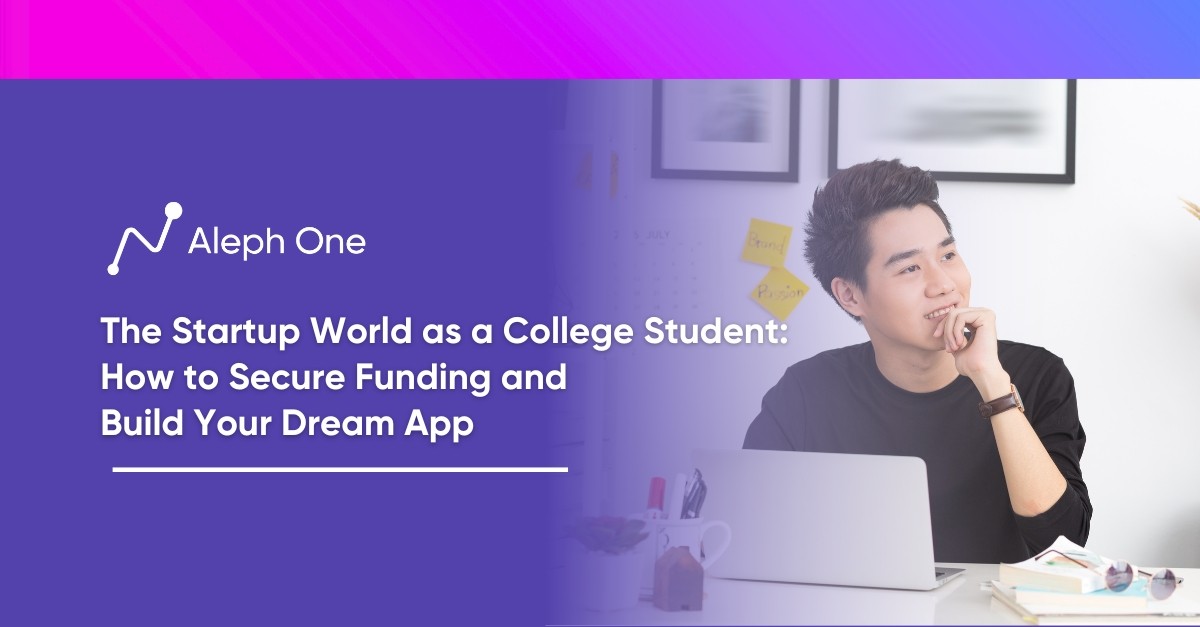Let’s work together to build something amazing. Share your project details and our team will reply to figure out the next steps to your success.

Starting early in the competitive world of design internships in startups can give you a significant advantage. Research has shown that beginning your internship search 6-12 months in advance increases your chances of securing an offer. Starting early gives you more time to set clear goals, explore a broader range of options, and network effectively. Networking is crucial, as many internships are filled through personal connections rather than public postings. Additionally, an early start allows you to tailor your applications, gather feedback, and enhance your interview skills, ultimately enabling you to present a standout application. The early bird truly does catch the internship, so it’s time to take proactive steps and kickstart your journey to a successful design internship in the startup world.

The Early Bird Catches the Internship
Starting your internship hunt early, ideally, 6-12 months in advance, gives you a head start on the competition and more time to network and tailor your applications. According to surveys, students who began their internship search more than six months in advance were twice as likely to receive an offer.
The Benefits of Searching for an Internship Early
Launching an early internship search is critical, especially if looking at competitive companies or roles. The earlier you start, the more time you have to determine your goals, research target companies, and build connections that may lead to opportunities. You can explore a broader range of options and take a more strategic approach instead of applying in a panic with only a few months until summer.
Networking Opportunities
An early start also gives you time to network, which is especially important for finding an internship. Over 50% of internal job postings are never posted publicly and are filled through networking and employee referrals. Beginning your search early allows you to tap into this hidden job market by attending industry events, reaching out to people currently in your target role, and building personal connections with company representatives. These connections will lead to an interview and a potential offer.
Craft a More Compelling Application
You can research each company in depth and tailor your resume and cover letter to align closely with what they are looking for in an intern. You can get feedback on your materials from professors, career services, and mentors. And you have time to polish and practice your interview skills before company meetings. The additional months allow for a customized, high-quality application that helps you stand out.
While it may seem early, launching your internship search 6-12 months ahead of your target start date provides significant advantages. The additional time allows you to be more strategic in your search, tap into networking opportunities, and develop a customized application for your target companies. An early start could make the difference between landing a dream internship and struggling to find an opportunity. The early bird truly does catch the internship!
Build Your Winning Resume
Your resume is your first chance to make a good impression and land an interview. For an internship, highlight relevant experience, skills, and accomplishments that match the employer’s desire. Use data and metrics to quantify your impact whenever possible.
Include Your Portfolio
For a design role, include a link to your online portfolio or case studies to showcase your abilities. Your portfolio should feature 3-5 of your best projects demonstrating your design skills and thinking process. Keep your resume concise and easy to read quickly since studies show internship employers spend an average of only 6 seconds reviewing each resume!
List Relevant Experiences
List any relevant coursework, clubs, volunteering, or freelance work. Emphasize transferable skills, including communication, critical thinking, and time management. If you have little direct experience, focus on your passion for the field and desire to learn. Mentions industry certifications and software proficiencies.
Organize Your Resume From Most to Least Important
Place the most critical information at the top, including your objective to obtain a design internship position. Use a simple, clean font with clear section headings. Have a friend or family member review for any errors. You can also ask a professor or career coach to evaluate how well your resume targets the specific position.
With the proper preparation, you can develop a resume that helps you stand out from the crowd. Keep tweaking and improving your resume based on feedback. The time you spend perfecting your resume will be well worth it when you land an interview for your dream design internship! Be ready to provide specific examples to illustrate the critical points in your resume. Enthusiasm for the work and passion for the field is among the top attributes internship employers seek in candidates.
Tap Into the Hidden Job Market
Over 50% of internships are never advertised and are filled through networking. Connecting with people currently in your target role or company is one of the best ways to uncover hidden opportunities and get referred as a strong candidate. Attend industry events, conferences, and meetups to make personal connections with recruiters, managers, and other professionals in your field of interest. In one survey, employee referrals were the top source for intern hires.
Contact People Within Your Network
Start by contacting people in your immediate network—family, friends, professors, and former colleagues. Let them know you are on the internship hunt and the specific types of companies and roles you are targeting. They may know of unadvertised openings or be able to connect you with someone who does. Expand your network by joining relevant LinkedIn groups and connecting with people currently in roles you aspire to. Engage by commenting on discussions and sending personalized invitations to connect.
Attend Industry Events & Conferences
Look for opportunities to meet hiring managers and recruiters in person at industry events, job fairs, guest lectures, and company open houses. Come equipped with copies of your resume, introduce yourself, express your interest in interning at their company, and try to schedule a follow-up call or informational interview. Even if they do not have a current opening, making a personal connection and getting on their radar could lead to future opportunities.
Stay in Touch With New Connections
Follow up and stay in touch with your new connections through emails, calls, and LinkedIn messages. Let them know about your progress in the internship search and reiterate your interest in any opportunities they may know about. While the hidden job market does require more work to uncover, the rewards can be huge. With the proper networking and persistence, you have a good chance of finding an unadvertised internship that could kickstart your career.
The key is starting your outreach early and leveraging your connections and resources to access the hidden internship market. While advertised roles receive hundreds of applicants, unadvertised openings often only consider a few referred candidates. With a proactive approach, you can get ahead of the competition and turn networking into an internship offer.
Ace the Interview
Once you’ve landed an interview for an internship, it’s time to prepare thoroughly. Do your research and learn as much as possible about the company, their mission, values, products, services, and customers. Also, study the specific internship role and what skills and experience they are looking for in candidates. Practice your answers to common interview questions like “Tell me about yourself,” “Why are you interested in this internship,” and “What are your strengths and weaknesses?” Be ready to provide concrete examples of situations where you have demonstrated relevant skills and abilities.
Be Prepared For Design Challenges and Portfolio Questions
For a design internship, you may be asked to complete a design challenge or share your portfolio. Make sure you understand the prompt clearly and can articulate your design process and decisions. Ask clarifying questions if needed. Some companies may conduct initial phone or video screenings before inviting candidates onsite for a full interview. Treat any screening as crucial as an in-person interview.
Convey Your Passion and Enthusiasm
During the interview, convey your passion for the work. Employers want to see enthusiasm and motivation. Share what specifically excites you about the company and internship opportunity. Discuss how this role aligns with your career goals and interests. Ask good questions demonstrating your interest and engagement, such as “What does success look like in this internship?” or “What opportunities are there to take on more responsibility over time?”
Body Language and Attire
Your attire, body language, and demeanor also make a strong impression. Dress in professional, polished attire, make eye contact, smile, and maintain positive body language. Be authentic in your answers and mindful of how you come across to others. Studies show that candidates with energy, confidence, and genuine passion during the interview have a competitive edge.
Send a Follow-Up Email or Note
Follow up within 24 hours with a thank you email or note. Briefly reiterate your interest and enthusiasm for the role. This is another chance to make a good impression and stay at the front of the interviewer’s mind. With the proper preparation and persistence, you can ace your interview and take one step closer to landing your dream design internship. Success comes to those who refuse to quit. Stay determined and keep putting your best foot forward.
Set Goals and Communicate
One of the keys to a successful internship experience is establishing clear goals and maintaining open communication with your manager. Meet with your manager within the first week or two of starting to determine critical objectives, priorities, and projects. Discuss what you hope to achieve and learn during the internship. Then check in regularly to ensure you are on track and meeting expectations.
Be Clear With Your Goals
For example, your goals may include:
- Gain exposure to different design process areas, such as user research, wireframing, visual design, etc. Discuss with your manager the types of projects you want to be involved in to achieve this goal.
- Develop or strengthen critical skills such as collaboration, communication, or design tools like Sketch or Figma. Ask your manager or coworkers if they have any recommendations for online courses or resources to help build these skills.
- Build your design portfolio by working on client projects or internal initiatives. Ensure your work is approved to be included in your portfolio before starting the project.
- Receive feedback on your performance and areas for improvement. Schedule biweekly or monthly check-ins with your manager to get constructive criticism and guidance. Be open to feedback and ask clarifying questions.
- Gain valuable experience to help determine if a career in design is the right path for you. Discuss with your manager the realities of a role as a designer to make sure your expectations match the actual day-to-day work.
Successful Interns Ask for Feedback & Questions
Be bold and ask your manager or coworkers to explain anything that needs to be clarified or clarified. Make an effort to build connections with others and take on additional responsibilities when possible. Studies show that internships with structured goals and objectives, where interns feel supported in their learning and development, are the most impactful experiences for both the intern and the organization.
Setting actionable goals, maintaining open communication, and taking advantage of all learning opportunities will help you get the most out of your design internship experience. With hard work and the right mindset, you can turn your internship into a full-time job offer after graduation.
Make the Most of Your Experience
Once you land the internship, it’s time to make the most of it. Take advantage of all chances to learn, build connections, and contribute value. While the job duties in your internship description provide a framework, look for ways to go above and beyond. Successful interns proactively seek additional projects and responsibilities to gain as much experience as possible.
Build Working Relationships
Start by building strong working relationships with your manager and coworkers. Express your enthusiasm for the work and your desire to learn. Ask thoughtful questions about their roles, experiences, and career paths. Let them know you’re eager to take on more responsibility when possible. These connections can lead to mentorship opportunities, recommendations, and job offers.
Look for Extra Value Beyond Internship Responsibilities
Look for ways to add extra value beyond your core internship responsibilities. If you notice an initiative that could use some help or see an opportunity to improve a process, speak up and offer your assistance. For example, if you’re doing design work, you might volunteer to help with marketing projects like social media or blog posts. Or, if you’re in a product management role, you could offer feedback on the user experience of the company’s app. While you want to respect people’s time, contributing where you can demonstrates your enthusiasm and commitment.
Take Advantage of Learning Opportunities
Take advantage of any additional learning opportunities, whether lunch and learn conference attendance or an online course. And don’t be afraid to ask if any other resources or events would be valuable for your professional development. The company invested in you as an intern, so they will likely want to see you grow as much as possible during your time there.
Make the Most Out of Your Internship
An internship is what you make of it. While work experience is essential, the relationships and connections you build can be even more valuable. Suppose you establish yourself as a passionate, hardworking, and proactive intern. In that case, you’ll get noticed by the organization and massively increase your odds of receiving a full-time job offer to come back after you graduate. Take ownership of your internship experience and make the most of this opportunity. The effort you put in now can pay off in starting your design career.
FAQ
What specific steps can students take to identify their goals and research target companies effectively?
To identify their goals and research target companies effectively, students can:
– Reflect on their interests, strengths, and desired career path.
– List target companies based on size, location, industry, and culture.
– Research each company’s mission, values, products or services, and recent news or projects.
– Follow target companies on LinkedIn and other social media platforms for updates and insights.
How can students lacking relevant experience develop transferable lls to increase their chances of getting an internship?
Students lacking relevant experience can develop transferable skills by:
– Taking on volunteer positions, joining clubs or organizations related to their desired field, or freelancing.
– Completing online courses or attending workshops to gain certifications and learn new software or techniques.
– Participating in internships or job-shadowing opportunities to gain firsthand exposure to their desired industry.
– Collaborating on team projects and demonstrating a willingness to learn, adapt, and grow.
What strategies can students follow to maintain a strong professional network after their internship has ended?
To maintain a strong professional network after their internship has ended, students can:
– Connect with former colleagues and supervisors on LinkedIn and maintain regular communication.
– Attend industry events or conferences to meet new contacts and stay informed about trends and updates.
– Share achievements, publications, or project updates on social media, showcasing their ongoing development.
– Offer to help former colleagues or connections when possible, fostering a mutually beneficial professional relationship.
Get the latest news and updates from Aleph One in your inbox.



